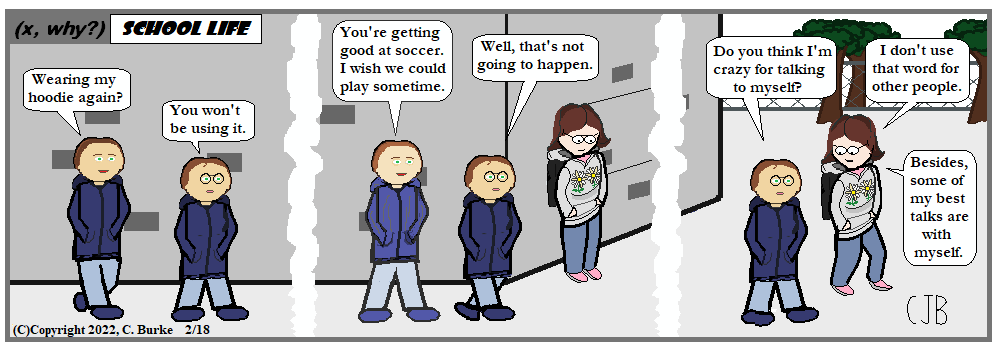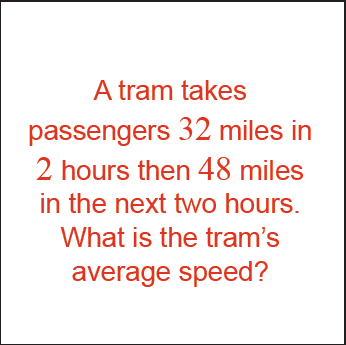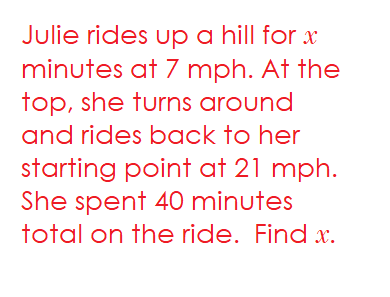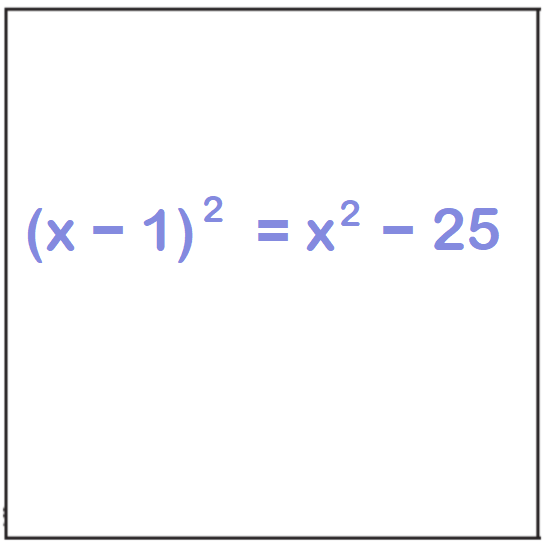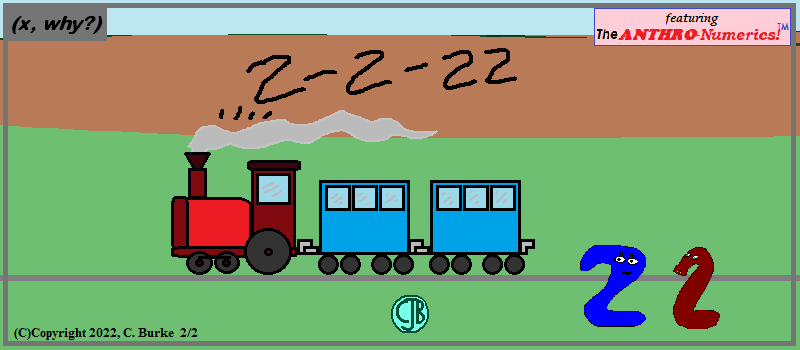Now that I'm caught up with the current New York State Regents exams, I'm revisiting some older ones.
More Regents problems.
Algebra 2/Trigonometry Regents, January 2011
Part I: Each correct answer will receive 2 credits.
6. What is the solution set of the equation |4a + 6| − 4a = −10?
1) ∅
2) {0}
3) {1/2}
4) {0, 1/2}
Answer: 1) ∅
You can plug in the last 3 choices, or you can work backward.
If should be obvious that 0 cannot be a choice because |6| =/= -10.
So you can check 1/2 or solve.
|4 (1/2) + 6| - 4(1/2) = |2 + 6| - 2 = 8 - 2 = 6, not -10.
While that isn't enough to prove that the answer is the Null Set, ∅, it does eliminate all of the choices we were given.
Working backward:
|4a + 6| − 4a = −10
|4a + 6| = -10 + 4a
4a + 6 = -10 + 4a OR 4a + 6 = -(-10 + 4a)
6 = -10 (impossible) or 4a + 6 = 10 -4a
Impossible or 8a = 4
Impossible or a = 1/2
But we have already check a = 1/2, and it is an extraneous solution that was created when we removed the absolute value symbols. If you substitute a = 1/2 into the second line above, you would have an absolute value equaling a negative number, which isn't possible.
So the answer is Null.
7. If sin A = 2/3 where 0° < A < 90°, what is the value of sin 2A?
1) 2√(5) / 3
2) 2√(5) / 9
3) 4√(5) / 9
4) -4√(5) / 9
Answer: 3) 4√(5) / 9
If 0° < A < 90° then 0° < 2A < 180°, so sin 2A is positive. Eliminate Choice (4).
If sin A = 2/3, then imagine a right triangle with one leg = 2 and the hypotenuse = 3. The other leg would be √(9 - 4) = √(5). So the cos A = √(5) / 3.
Sin 2A = 2 sin A cos A = 2 (2/3) (√(5)/3) = 4√(5) / 9, which is Choice (3).
You could have also found the approximate value for sin-2 2/3, which is about 41.81 degrees. Multiply that by 2 to get 83.62. The sine of that value would be close to 1. It's 0.993.
If you evaluate Choices (1) and (3), you'll see that (3) is the correct answer.
8. A dartboard is shown in the diagram below. The two lines intersect at the center of the circle, and the central angle in sector 2 measures 2π/3.
1) 1/6
2) 1/3
3) 1/2
4) 2/3
Answer: 2) 1/3
The entire circle is 2π. Sector 2 is 2π/3, so Sector 4 is 2π/3. That means that the total of Sectors 1 and 4 must be 2π - (2π/3 + 2π/3) = 2π/3. Each of the two sectors would be half of that, or 2π/6 each.
So the probability that a dart hitting the circle randomly will fall in 1 or 3 is 1/3 because 1 and 3 together have the same area as 2 and 4 have individually. This is Choice (2).
x3 + x2 − 2x = 0
x(x2 + x − 2 = 0
x(x + 2)(x - 1) = 0
x = 0 or x = -2 or x = 1
9. If f(x) = x2 − 5 and g(x) = 6x, then g(f(x)) is equal to
1) 6x3 − 30x
2) 6x2 − 30
3) 36x2 − 5
4) x2 + 6x − 5
Answer: 2) 6x2 − 30
Since g(x) = 6x, if the input the g is f(x), then multiply f(x) by 6.
g(f(x)) = g(x2 − 5) = 6(x2 − 5) = 6x2 − 30.
That is Choice (2).
10. Which arithmetic sequence has a common difference of 4?
1) {0, 4n, 8n, 12n, . . .}
2) {n, 4n, 16n, 64n, . . .}
3) {n + 1, n + 5, n + 9, n + 13, . . .}
4) {n + 4, n + 16, n + 64, n + 256, . . .}
Answer: 3) {n + 1, n + 5, n + 9, n + 13, . . .}
If there is a common difference of 4, then each term should be 4 more than the term before it (except for the first term, of course).
Choice (1) looks like it has a common ratio of 4, not a common difference. However, it's not a geometric series because of the 0 first term. You can't multiply 0 by any number and get anything other than 0. Eliminate it.
Choice (2) has a common ratio of 4, not a common difference. Eliminate it.
Choice (3) has a common difference of 4. The expression n + 5 is 4 more than n + 1, or n + 5 - 4 = n + 1, and n + 9 - 4 = n + 5, etc. Choice (3) is the answer.
Choice (4) has neitehr a common difference nor a common ratio. The constant has a ratio of 4, but the variable has a ratio of 1. This isn't allowed. Eliminate it.
More to come. Comments and questions welcome.
More Regents problems.
I also write Fiction!
You can now preorder Devilish And Divine, edited by John L. French and Danielle Ackley-McPhail, which contains (among many, many others) three stories by me, Christopher J. Burke about those above us and from down below.
Preorder the softcover or ebook at Amazon.
Also, check out In A Flash 2020, by Christopher J. Burke for 20 great flash fiction stories, perfectly sized for your train rides.
Available in softcover or ebook at Amazon.
If you enjoy it, please consider leaving a rating or review on Amazon or on Good Reads.
|
 |
 |




